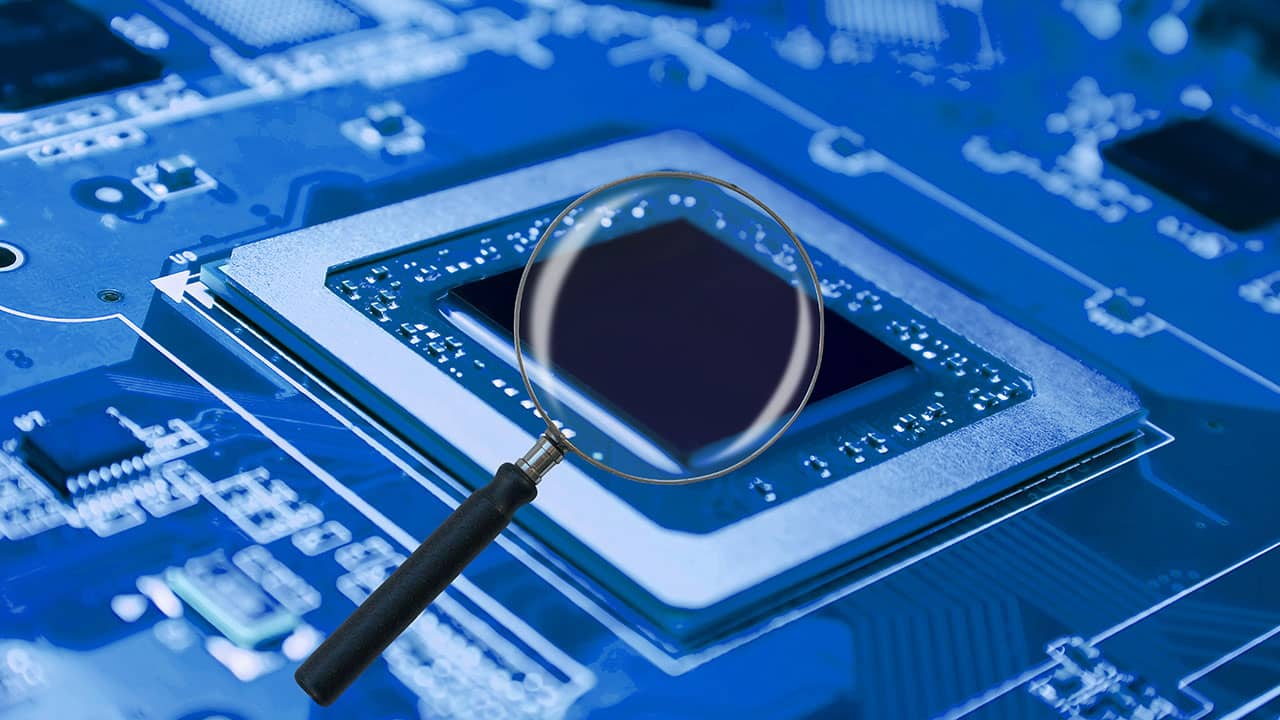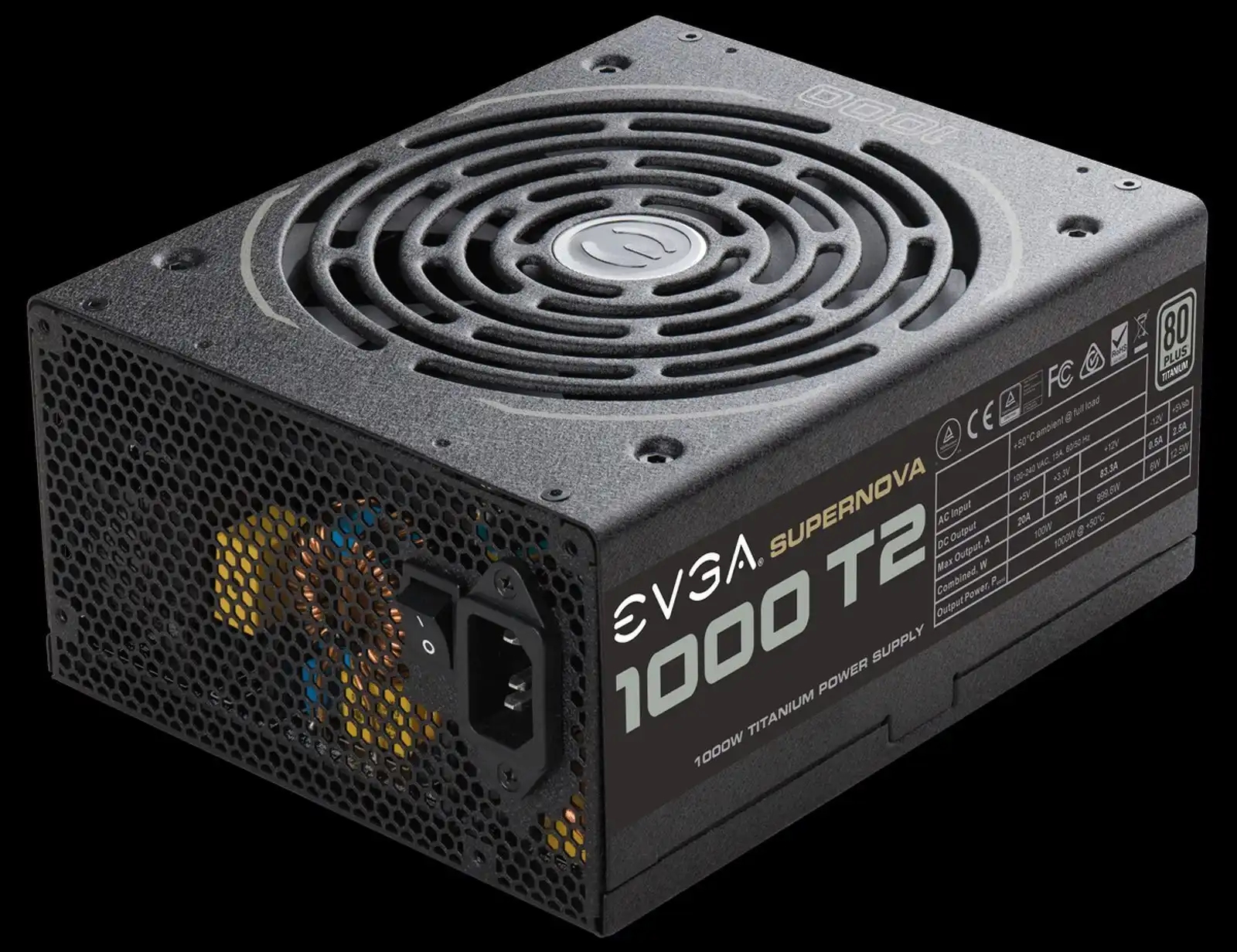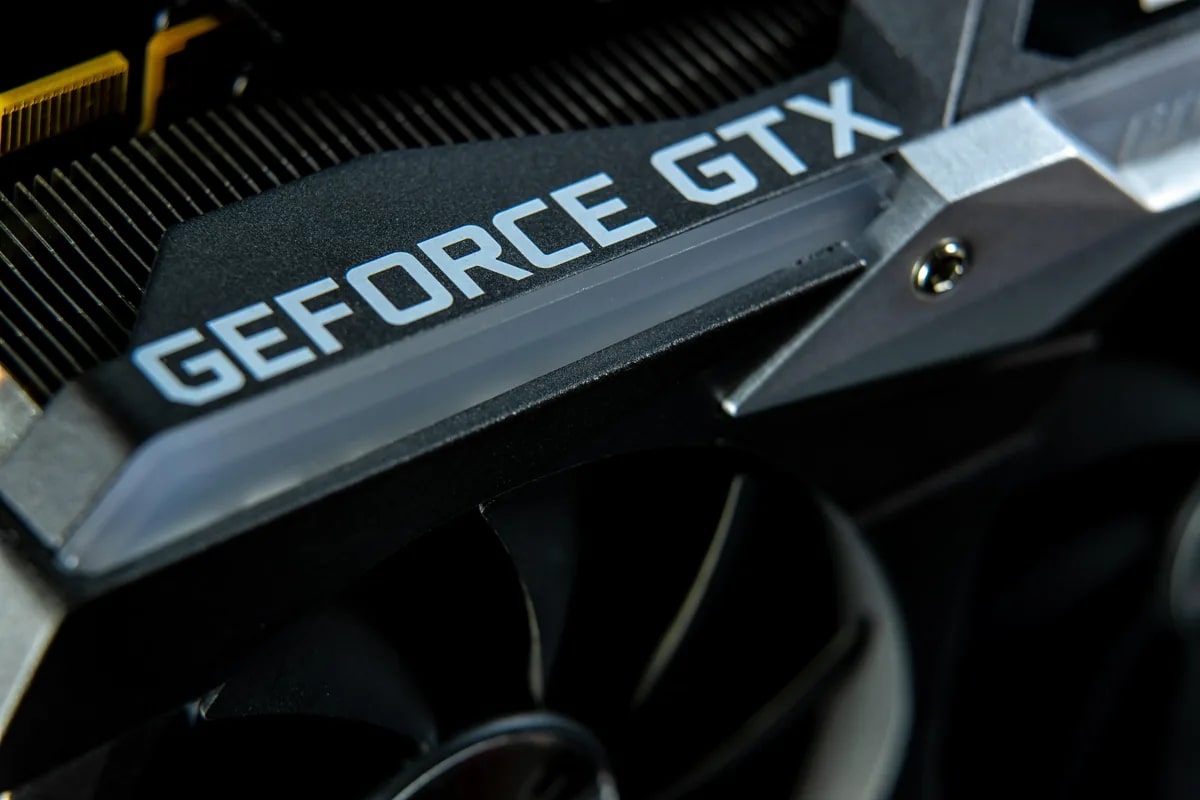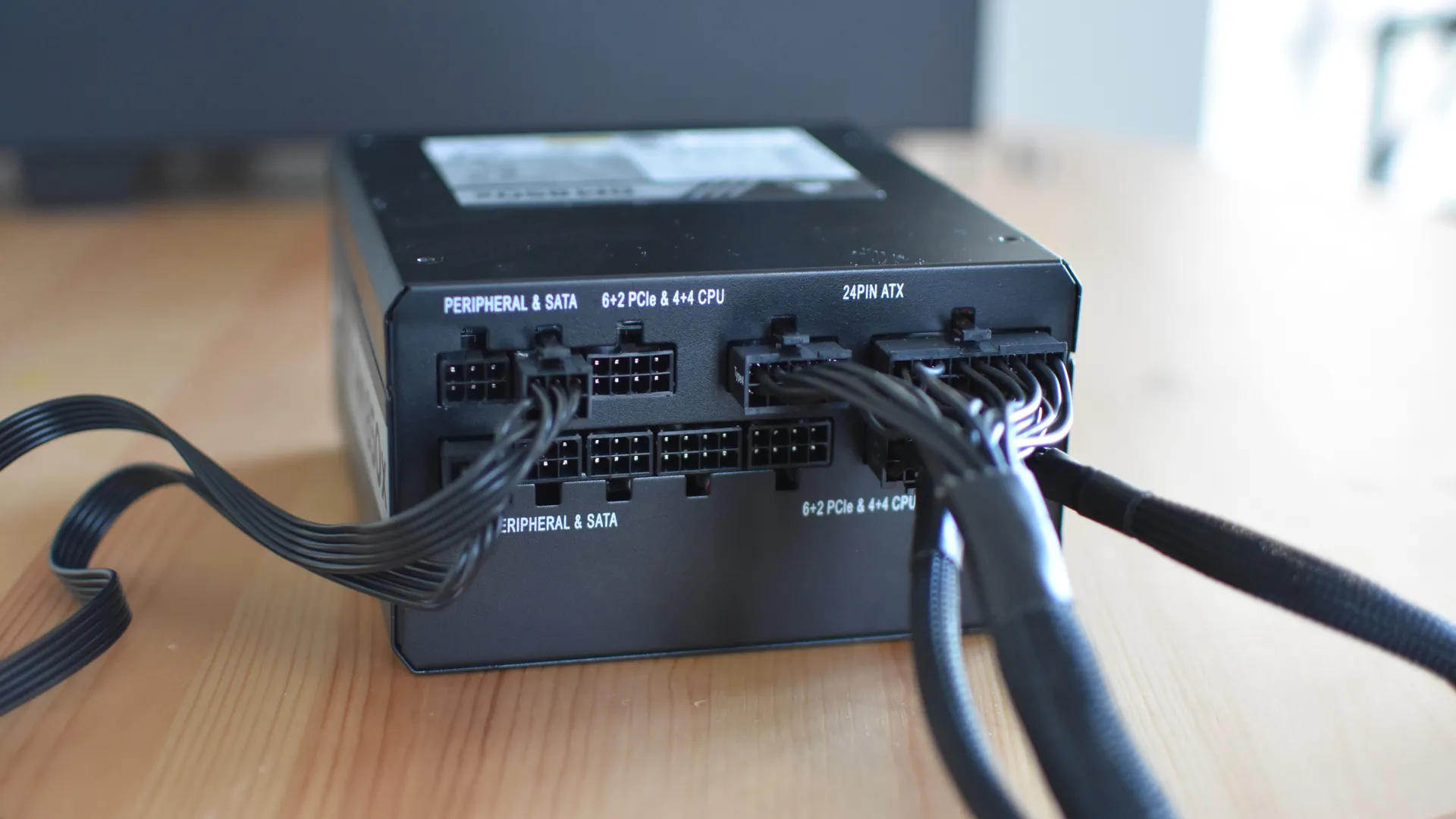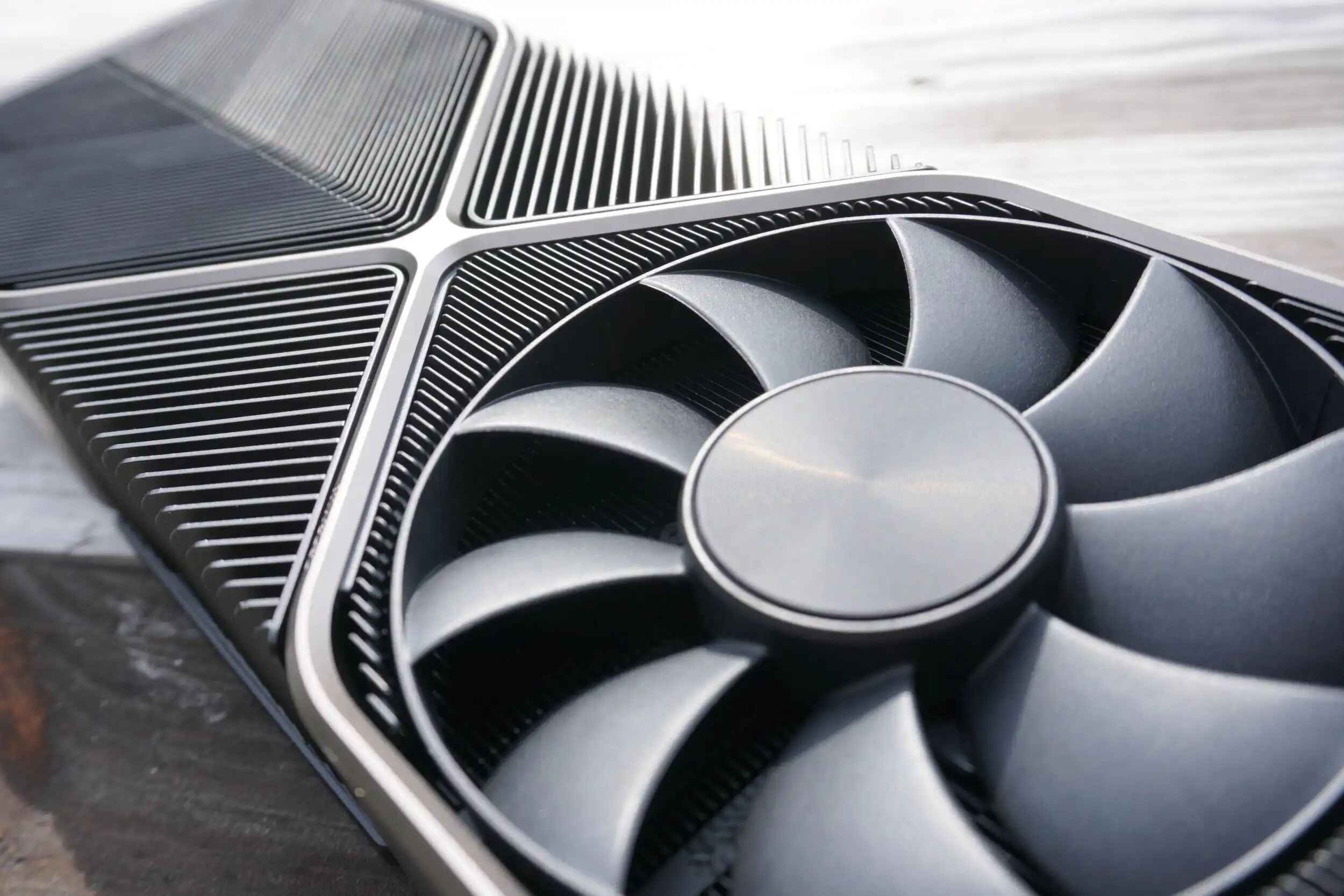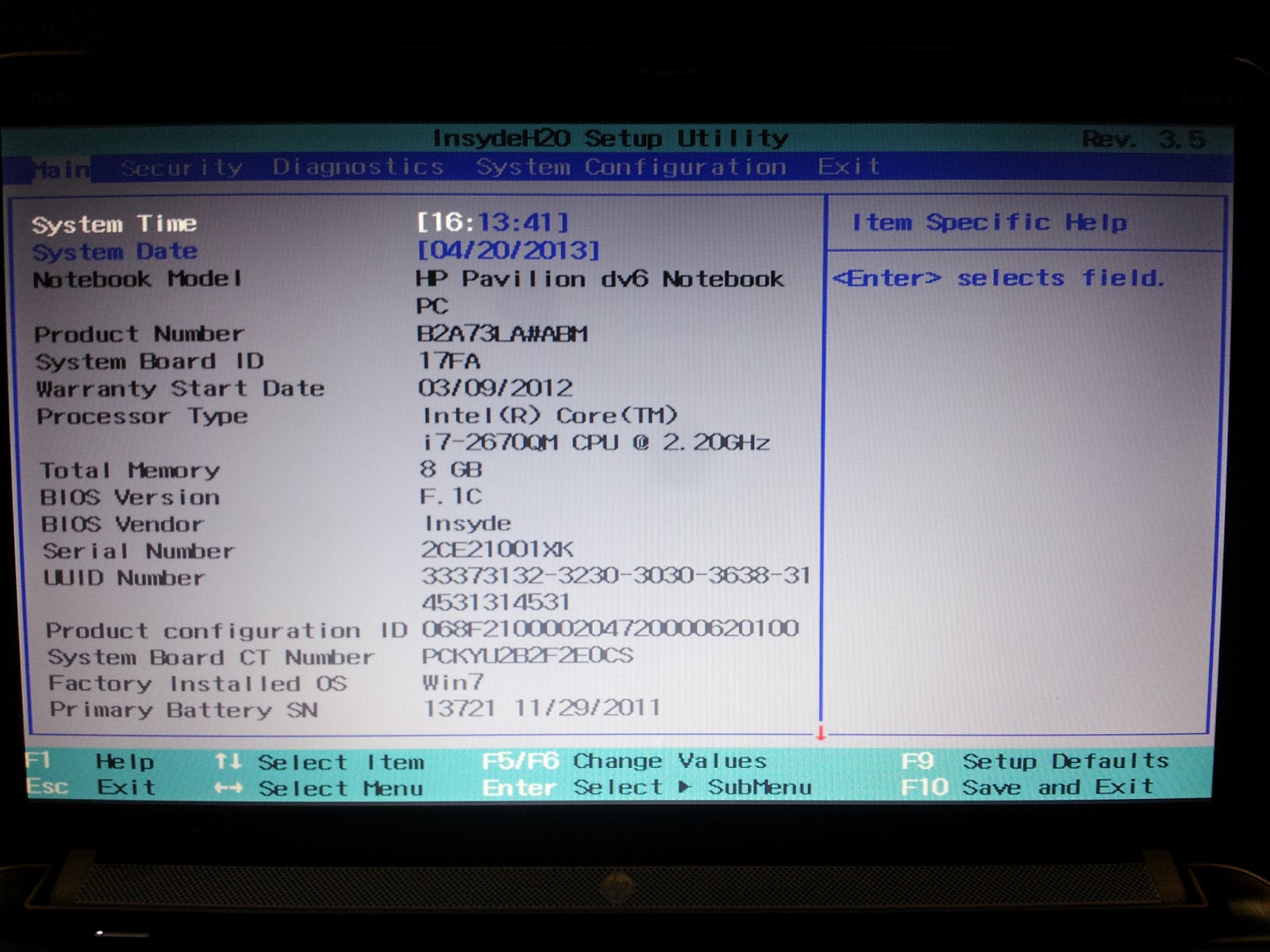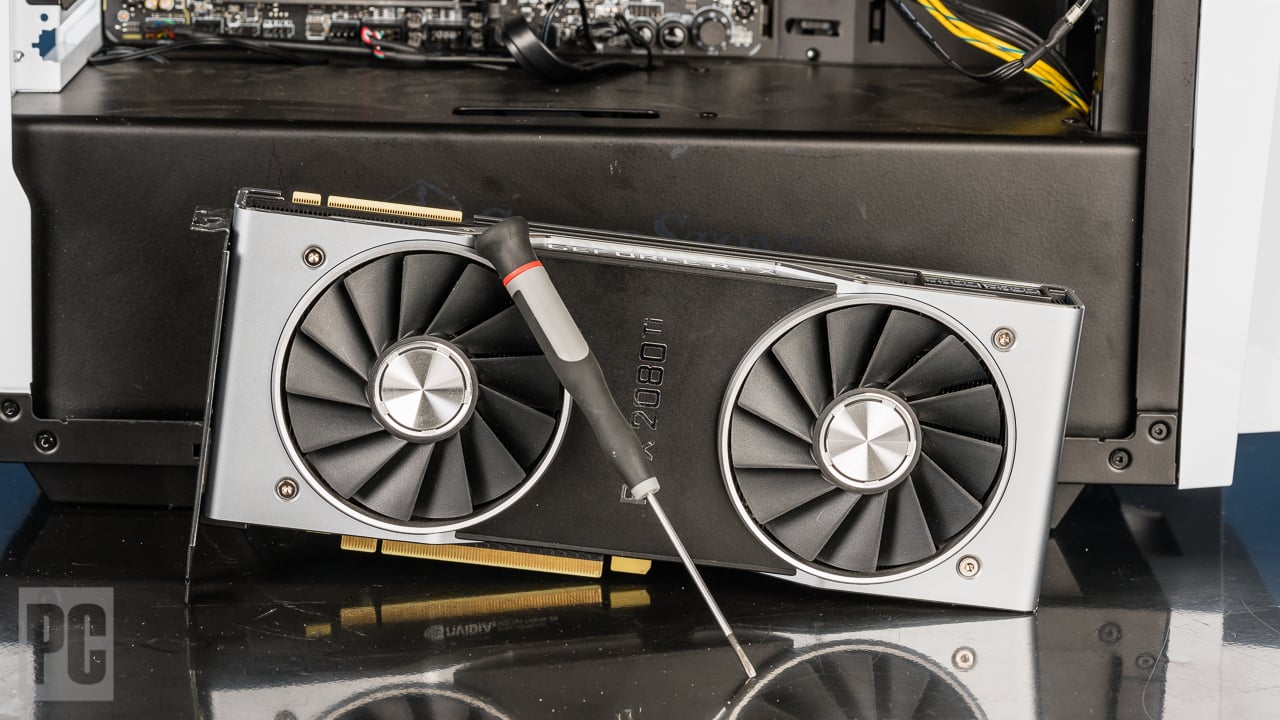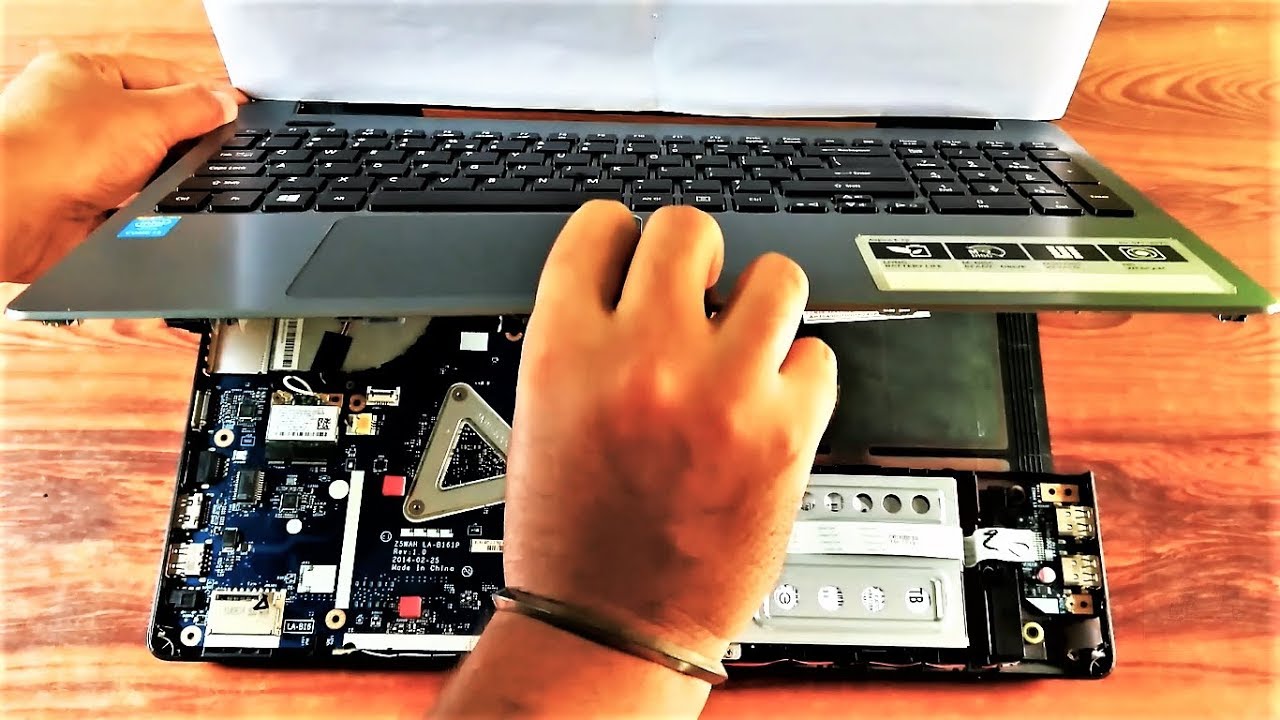Introduction
A graphics card, also known as a video card or GPU (Graphics Processing Unit), is an essential component of a computer system that handles the rendering and display of visual information. It is particularly crucial for tasks that require intensive graphic processing, such as gaming, video editing, and 3D modeling.
In today’s digital age, where visuals play a vital role in various industries, having a good graphics card is essential. However, determining whether a graphics card is good or not can be a daunting task, especially for those who are new to the world of computer hardware.
Thus, in this article, we will delve into the key factors that make a graphics card good and help you understand what to look for when making a purchase decision. Whether you’re a gamer looking to enhance your gaming experience or a professional in need of reliable graphics processing power, this guide will provide valuable insights to help you choose the right graphics card.
By considering aspects like performance, compatibility, price, gaming requirements, cooling and power requirements, and future-proofing, you can make an informed decision and ensure that the graphics card you choose will meet your specific needs and expectations.
So, let’s dive in and explore all the important factors that contribute to a graphics card’s quality and determine if it’s good enough for your requirements.
What is a graphics card?
A graphics card, also referred to as a video card or GPU (Graphics Processing Unit), is an essential component of a computer system that is responsible for rendering and displaying images, videos, and animations on a monitor or screen. It works in conjunction with the CPU (Central Processing Unit) to handle the complex mathematical calculations required for graphics rendering.
Graphics cards are designed specifically to handle the heavy computational tasks involved in generating high-quality visuals. They consist of several key components, including a graphics processing unit (GPU), video memory (VRAM), cooling systems, and various input/output ports.
The GPU, which is the heart of the graphics card, is responsible for executing the calculations required for rendering images and videos. It consists of thousands of processing cores that work simultaneously to process data and perform complex mathematical operations. The more powerful the GPU, the faster and more efficient the graphics processing will be.
Video memory (VRAM) is dedicated memory on the graphics card that stores and manages data related to images and textures. This memory is crucial for storing and retrieving data quickly during the rendering process, ensuring smooth and lag-free performance.
Graphics cards also include cooling systems to regulate temperature as the GPU generates a significant amount of heat during operation. Cooling systems typically consist of fans and heat sinks that dissipate heat and prevent the graphics card from overheating. Proper cooling is essential for maintaining optimal performance and preventing damage to the card.
In terms of connectivity, graphics cards come equipped with different input/output ports, such as HDMI, DisplayPort, and DVI, that allow for easy connection to a monitor or other display devices.
Overall, graphics cards are crucial components for modern computers, enabling smooth and high-quality graphics rendering for various applications, including gaming, video editing, 3D modeling, and more.
What makes a graphics card good?
When assessing the quality of a graphics card, several key factors come into play. Understanding these factors is crucial in determining whether a graphics card meets your specific needs and expectations. Here are the main criteria that make a graphics card good:
- Performance: One of the most important factors is the graphics card’s performance. This includes its ability to handle graphics-intensive tasks, such as gaming or video editing, smoothly and efficiently. Higher performance often translates to better frame rates, smoother gameplay, and improved visual quality. Look for graphics cards with higher clock speeds, more VRAM, and a higher number of CUDA cores for optimal performance.
- Compatibility: It is essential to ensure that the graphics card is compatible with your computer system. Check the compatibility of the graphics card with your motherboard, power supply, and available expansion slots. Consider factors such as the card’s physical dimensions, power requirements, and compatibility with the operating system.
- Price: Budget plays a significant role in determining the right graphics card for you. Compare prices from different manufacturers and consider the features and performance you require within your budget. Sometimes, it may be beneficial to opt for a slightly older model or a mid-range card that offers a good balance between price and performance.
- Gaming Requirements: If you intend to use the graphics card primarily for gaming, consider the specific requirements of the games you play. Check the system requirements of the latest games and ensure that the graphics card meets or exceeds those requirements for optimal performance.
- Cooling and Power Requirements: Graphics cards tend to generate a significant amount of heat during operation. Look for cards with efficient cooling solutions, such as multiple fans or liquid cooling, to ensure that the card remains cool under heavy load. Additionally, consider the power requirements of the graphics card and ensure that your power supply can handle it.
- Future Proofing: As technology advances rapidly, it is wise to consider the future-proofing capabilities of a graphics card. Look for features such as support for the latest graphics APIs (Application Programming Interfaces) like DirectX or Vulkan, as well as technologies like ray tracing or DLSS (Deep Learning Super Sampling). These features can enhance the longevity and performance of the graphics card in the long run.
Considering these factors and evaluating them based on your specific requirements will help you determine whether a graphics card is good enough for your needs. It is crucial to strike a balance between performance, compatibility, price, and future-proofing to make an informed decision.
Performance Factors to Consider
When evaluating the performance of a graphics card, several key factors come into play. By considering these factors, you can determine whether a graphics card will meet your specific requirements. Here are the performance factors you should consider:
- GPU Clock Speed: The GPU clock speed, measured in MHz or GHz, determines how fast the graphics card can perform calculations. A higher clock speed generally indicates better performance and faster rendering of graphics.
- Number of CUDA Cores: CUDA cores are the processing units within the graphics card. The more CUDA cores a graphics card has, the faster it can process data and execute calculations. GPUs with a higher number of CUDA cores tend to deliver better performance.
- Video Memory (VRAM): VRAM is dedicated memory on the graphics card used to store and access data related to images and textures. Higher VRAM allows for smoother rendering of complex scenes and better handling of high-resolution textures.
- Memory Bandwidth: Memory bandwidth, measured in gigabytes per second (GB/s), refers to the speed at which data can be transferred between the GPU and VRAM. Higher memory bandwidth facilitates faster data exchange and can contribute to improved performance.
- Memory Type: The type of memory used in the graphics card can impact performance. GDDR6 memory, for example, offers better bandwidth and faster data transfer compared to older GDDR5 memory.
- Resolution and Refresh Rate: Consider the resolution and refresh rate of your monitor. Higher resolutions and refresh rates require more graphics processing power. Ensure that the graphics card can handle the desired resolution and refresh rate for smooth and visually appealing gameplay.
- Overclocking Potential: Some graphics cards have the potential for overclocking, allowing you to increase the clock speed and performance further. This can provide a performance boost, but it comes with increased power consumption and heat generation, so proper cooling is essential.
It is important to note that while these factors are crucial in assessing performance, it is essential to consider the overall system configuration as well. A high-performing graphics card may not deliver optimal results if the CPU, RAM, or other components are not able to keep up.
Consider your specific needs, such as gaming requirements or professional applications, and evaluate the performance factors accordingly. By carefully considering these factors, you can choose a graphics card that offers the performance you desire for your intended use.
Benchmarking
Benchmarking is an essential process that helps assess the performance of a graphics card objectively. It involves running standardized tests and comparing the results against other graphics cards or industry benchmarks. By benchmarking a graphics card, you can gain insights into its performance capabilities and make informed decisions when purchasing or upgrading.
There are several popular benchmarking tools available that evaluate different aspects of a graphics card’s performance. These tools typically measure metrics such as frame rates, rendering times, and overall system performance. Some well-known benchmarking software includes 3DMark, Unigine Heaven, and FurMark.
When benchmarking a graphics card, it’s important to consider the following:
- Test Parameters: Ensure that you use consistent and reliable test parameters for accurate comparisons. This includes using the same resolution, graphics settings, and testing conditions across different cards.
- Test Suites: Benchmarking tools often provide different test suites that assess various aspects of a graphics card’s performance, such as gaming performance, synthetic benchmarks, and temperature stability. Run tests relevant to your intended use to get a clear picture of the card’s capabilities.
- Comparison with Similar Cards: Compare the performance of the graphics card you are considering against other similar models or generations. This will help you understand how it ranks in terms of performance and price-to-performance ratio.
- Real-World Performance: While benchmarks provide valuable insights, it’s important to remember that real-world performance may vary. Factors such as driver optimization, game optimization, and system configuration can impact actual gameplay or application performance.
Benchmarking allows you to see how a graphics card performs in various scenarios, helping you gauge its capabilities and suitability for your specific requirements. It serves as a useful tool in determining whether a graphics card meets your performance expectations and offers value for your investment.
Keep in mind that benchmarking should be used as a reference point and not the sole decision-making factor. Consider other factors such as compatibility, price, and specific usage requirements for a well-rounded assessment of the graphics card’s overall suitability.
Compatibility
When selecting a graphics card, compatibility is a crucial factor to consider. It ensures that the graphics card is compatible with your computer system and can be properly installed and utilized. There are several aspects of compatibility to examine:
- Motherboard Compatibility: Check if the graphics card is compatible with your motherboard’s expansion slot. The most common slot types are PCIe (PCI Express). Ensure that you have available slots of the correct type and that they provide sufficient bandwidth for the graphics card.
- Power Supply Compatibility: Graphics cards require an adequate power supply to function properly. Verify the power requirements of the graphics card and ensure that your power supply can deliver sufficient power through the required power connectors.
- Physical Dimensions: Graphics cards come in various sizes, and it’s important to consider the physical dimensions of the card and the available space inside your computer case. Additionally, ensure that the card does not interfere with other components like RAM modules or cooling systems.
- Operating System Compatibility: Check if the graphics card is compatible with your operating system. Make sure that appropriate drivers are available for your specific operating system version to ensure proper functionality and performance.
- Connectivity: Consider the connectivity options offered by the graphics card. Check if it has the necessary ports to connect to your display devices, such as HDMI, DisplayPort, or DVI. Additionally, if you require multiple monitor setups, ensure that the card supports the desired number of displays.
- Heat Dissipation: Graphics cards generate heat during operation, so it’s important to ensure proper heat dissipation. Verify if your computer case has adequate airflow and cooling options to keep the graphics card cool. Additionally, consider the cooling solutions provided by the graphics card itself, such as fans or heat sinks.
By considering these compatibility factors, you can ensure that the graphics card seamlessly integrates into your system and operates optimally without any compatibility issues. Failing to account for compatibility can result in an incompatible graphics card that may not work at all or may cause performance issues and system instability.
Remember to consult the manufacturer’s specifications and documentation to verify compatibility before making a purchase. Ensure that the graphics card’s requirements align with your system’s capabilities to have a hassle-free and compatible setup.
Price
When purchasing a graphics card, price is an important factor that needs careful consideration. Graphics cards can vary widely in price, ranging from budget-friendly options to high-end and enthusiast-grade models. Here are a few factors to keep in mind when evaluating the price of a graphics card:
- Budget: Determine your budget for a graphics card before making a purchase. Having a set budget will help narrow down your options and prevent overspending.
- Performance-to-Price Ratio: Consider the performance-to-price ratio when comparing different graphics cards. Sometimes, a slightly older model or a mid-range card can offer excellent performance at a more affordable price, providing a better value for your money.
- Future Needs: Evaluate your future needs and aspirations. If you plan to upgrade your monitor or engage in more demanding tasks in the near future, it might be wise to invest in a higher-end card that can handle those requirements without the need for an immediate upgrade.
- Brand and Warranty: Take into account the reputation and warranty offered by different manufacturers. Brand reputation can be an indicator of quality and customer support, ensuring a more reliable product and after-sales service.
- Used vs. New: Consider whether you are open to purchasing a used or refurbished graphics card. Used cards can sometimes offer better performance for the price, but it’s important to ensure that the card is in good condition and has not been overclocked or damaged.
It’s important to strike a balance between budget and the desired level of performance. While it can be tempting to opt for the highest-end graphics card available, it may not always provide a substantial improvement in performance compared to a more reasonably-priced mid-range card.
Consider the specific requirements of your intended use, such as gaming, video editing, or graphic design, and choose a graphics card that offers the right balance of performance and price for your needs.
Lastly, keep an eye out for discounts, promotions, and deals from retailers or manufacturers, as they can provide cost-saving opportunities when purchasing a graphics card without compromising on quality or performance.
Gaming Requirements
If you are primarily purchasing a graphics card for gaming, it is crucial to consider the specific requirements of the games you play. Different games have varying demands in terms of graphics processing power, resolution, and detail settings. Here are a few factors to consider when evaluating a graphics card for gaming:
- System Requirements: Check the system requirements of the latest games you intend to play. Look for recommended or optimal graphics card specifications specified by the game developers, and ensure that the graphics card you choose meets or exceeds those requirements for a smooth gaming experience.
- Resolution and Detail Settings: Determine the resolution at which you want to play games and the level of detail settings you desire. Higher resolutions and maximum detail settings require more powerful graphics cards. Ensure that the graphics card you choose can handle the desired resolution and detail settings to provide an immersive and visually appealing gaming experience.
- Frame Rates: Frame rates play a vital role in gaming, as they determine how smoothly the game runs. Higher frame rates provide a smoother and more responsive gameplay experience. Consider the target frame rates you want to achieve and choose a graphics card capable of delivering those frame rates at your desired resolution and detail settings.
- Virtual Reality (VR) Support: If you plan to delve into virtual reality gaming, ensure that the graphics card supports VR features and meets the recommended specifications for the VR headset you intend to use.
- Game-Specific Features: Some games may have specific features that are optimized for certain graphics cards or technologies. Research game-specific features like ray tracing, DLSS, or AMD’s FidelityFX to determine if the graphics card you are considering can take advantage of these enhancements.
- Multi-Monitor Setups: If you plan to use multiple monitors for gaming, check if the graphics card supports the number of displays you want to use. Ensure that it can handle the additional rendering requirements and connect to the necessary ports for your multi-monitor setup.
By considering these gaming requirements, you can choose a graphics card that meets the demands of your favorite games and provides an enjoyable and immersive gaming experience. Keep in mind that gaming requirements can vary, so it’s essential to find the right balance between performance, resolution, and budget for your specific needs.
Cooling and Power Requirements
When selecting a graphics card, it is important to consider both the cooling and power requirements associated with its operation. These factors ensure that the graphics card can function optimally and maintain stable performance. Here are the key considerations:
- Cooling Solutions: Graphics cards generate heat during operation, which can adversely affect performance if not properly managed. Check if the graphics card has reliable cooling solutions, such as fans or heat sinks. Cards with multiple fans or advanced cooling technologies, like liquid cooling, can help dissipate heat more effectively and keep the temperature within an acceptable range.
- System Cooling: In addition to the cooling solution provided by the graphics card, make sure your computer system has adequate ventilation and airflow. Good system cooling, achieved through case fans or liquid cooling solutions, helps maintain an ideal operating temperature for both the graphics card and other components.
- Power Supply: Graphics cards have specific power requirements that must be met for optimal performance. Verify the power consumption of the graphics card and ensure that your power supply unit (PSU) can deliver sufficient power. Check if your PSU has the necessary power connectors (e.g., 6-pin, 8-pin, or 8+6-pin) required by the graphics card.
- Power Supply Efficiency: Consider the efficiency rating of your power supply. Higher-rated power supplies, such as 80 PLUS certified units, offer better power efficiency, ensuring stable and reliable power delivery to the graphics card. This can minimize power fluctuations and enhance the overall performance of your system.
- Overclocking Potential: If you plan on overclocking your graphics card for enhanced performance, ensure that you have sufficient cooling and power supply capacity. Overclocking increases power consumption and heat output, so adequate cooling and an ample power supply are essential to prevent overheating and instability.
Proper cooling and power management contribute to the longevity and stability of a graphics card. Neglecting these aspects can lead to performance degradation, thermal throttling, or even hardware failure. It is crucial to ensure that your system has the necessary cooling capabilities and a reliable power supply to support the graphics card’s requirements.
Additionally, keeping your graphics card and overall system clean and free from dust accumulation ensures continued efficient cooling and prevents thermal issues. Regularly inspect and clean out any dust or debris that may hinder airflow and cooling performance.
By paying attention to cooling and power requirements, you can maintain the performance and longevity of your graphics card, allowing it to deliver consistently reliable performance while minimizing the risk of overheating or power-related issues.
Future Proofing
When purchasing a graphics card, it’s important to consider future-proofing to ensure that your investment will remain relevant and capable of meeting your needs for an extended period. Future-proofing involves anticipating technological advancements and selecting a graphics card that can adapt to those changes. Here are some factors to consider for future-proofing:
- Latest Graphics APIs: Ensure that the graphics card supports the latest graphics APIs (Application Programming Interfaces) such as DirectX or Vulkan. These APIs are constantly evolving, and games and applications are designed to take advantage of their latest features and optimizations.
- Technological Advancements: Consider emerging technologies like ray tracing or DLSS (Deep Learning Super Sampling). Graphics cards that support these technologies offer enhanced visual fidelity and performance. Investing in cards with these features, even if not widely adopted at the moment, can future-proof your system for upcoming games and applications that leverage these technologies.
- Memory Capacity: Graphics-intensive applications continue to demand more VRAM (video random access memory). Choose a graphics card with ample video memory to handle future increases in texture resolutions, higher graphical complexity, and multitasking scenarios.
- CUDA Cores and Processing Power: As software and applications become more demanding, higher numbers of CUDA cores and processing power become crucial. A higher-end graphics card with more processing units can handle future software advancements and deliver enhanced performance.
- Compatibility: Consider the compatibility of the graphics card with future hardware and software. Ensure that it is compatible with upcoming technologies, expansion slots, and operating system updates. This ensures that you can seamlessly upgrade your system without worrying about compatibility issues.
- Manufacturer Support: Check the manufacturer’s track record of providing driver updates and support for older graphics card models. A manufacturer that consistently provides updates ensures compatibility and support for future software releases while maximizing the longevity of your graphics card.
It is important to note that future-proofing cannot guarantee complete compatibility or performance with future technologies. However, by considering these factors and choosing a graphics card that offers a balance of current performance and potential for future enhancements, you can extend the usefulness of your graphics card and delay the need for an upgrade.
While future-proofing is beneficial, balance it with your present needs and budget. It is not always necessary to invest in the most expensive high-end graphics card if your current requirements do not justify the extra cost.
By considering future-proofing factors, you can make a more informed decision when purchasing a graphics card, ensuring that it remains relevant and capable of meeting your needs while accommodating future advancements in the industry.
Conclusion
Choosing the right graphics card for your needs is essential to ensure optimal performance and a satisfying user experience. Throughout this guide, we have explored various aspects that determine whether a graphics card is good enough, including performance, compatibility, price, gaming requirements, cooling and power requirements, and future-proofing.
Assessing performance factors such as clock speed, number of CUDA cores, VRAM, memory bandwidth, and memory type can help you gauge the graphics card’s capability to handle demanding tasks. Compatibility considerations, such as motherboard compatibility, power supply compatibility, physical dimensions, operating system compatibility, and connectivity, ensure seamless integration into your system.
Pricing is a critical factor that must be balanced with performance expectations and budget constraints. Consider factors like the performance-to-price ratio, future needs, brand reputation, warranty, and the option of purchasing used graphics cards.
If gaming is your primary focus, evaluate the specific gaming requirements of the games you play, taking into account factors like system requirements, resolution, detail settings, frame rates, VR support, and the potential for multi-monitor setups.
Cooling and power requirements are crucial for maintaining optimal performance and preventing overheating or power-related issues. Ensure that the graphics card has efficient cooling solutions and that your system has proper ventilation and an appropriate power supply.
Lastly, future-proofing considerations, such as the support of the latest graphics APIs, technological advancements, memory capacity, processing power, compatibility, and manufacturer support, can help extend the lifespan of your graphics card and keep it relevant for future advancements in software and hardware.
By considering all these factors in a well-balanced manner, you can make an informed decision and choose a graphics card that meets your specific needs, offers optimal performance, and provides a satisfactory user experience.







